Saraburi, nestled in the heart of Thailand’s Central Region, stands as a testament to the diverse tapestry of experiences the country offers beyond its famed beaches and bustling cities. Strategically situated just northeast of Bangkok, this province boasts a rich blend of historical landmarks, spiritual sanctuaries, and captivating natural wonders. While it might not always be the first name on every traveler’s Thai itinerary, Saraburi beckons with unique tourist opportunities, serving as a gateway to explore Thailand’s profound history, serene landscapes, and vibrant local culture.
Top 10 Things to Do in Saraburi
Tucked away in the Central Region of Thailand, Saraburi is a captivating blend of historical allure, natural wonders, and rich cultural traditions. While it may not be as globally renowned as Bangkok or Phuket, those in the know cherish it for the unique experiences it offers.
If you’re planning a visit, here’s a list of the top 10 things to do in Saraburi, ensuring you get the most out of this delightful province.
- Visit Wat Phra Phutthabat: A journey to Saraburi is incomplete without visiting this revered temple that houses what is believed to be the footprint of Buddha. Marvel at its splendid architecture and soak in the spiritual atmosphere.
- Experience Muak Lek Waterfall: Nestled amidst lush greenery, this waterfall is the perfect spot to unwind. Its cool, clear waters beckon for a refreshing dip.
- Stroll through Phu Khae Botanical Garden: This vast garden boasts over 2,000 plant species. Wander through its pathways and immerse yourself in nature’s beauty.
- Bask in the Sunflower Fields: If you visit between November and January, the sunflower fields in full bloom are a sight to behold. The vast stretches of golden petals against a clear blue sky are truly mesmerizing.
- Seek Healing at Tham Krabok Monastery: This unique monastery is not only a spiritual retreat but also a renowned drug rehabilitation center. Learn about its herbal treatments and perhaps even partake in a meditation session.
READ MORE: Thailand Travel Guide: 5 Travel Destinations in Lampang Province - Explore the Pasak Cholasit Dam: Offering panoramic views of the water against majestic mountains, this dam is perfect for boat rides, picnics, or simply reveling in the scenic beauty.
- Admire Roses at Mon Lhong 2000: This vast rose garden promises a riot of colors and fragrances. An ideal spot for flower enthusiasts and those seeking a tranquil escape.
- Trek in Phra Buddha Bat Forest Park: For adventure enthusiasts, this park offers hiking trails, bird-watching opportunities, and camping spots amidst dense forests and serene ponds.
- Visit Local Markets: Dive into the local culture by visiting Saraburi’s bustling markets. Sample traditional delicacies, shop for souvenirs, and interact with the friendly locals.
- Cave Exploration at Wat Tham Phra Phothisat: Venture inside this cave temple, surrounded by limestone formations, and discover the serene Buddha statues inside. The unique blend of nature and spirituality here offers a soul-soothing experience.
Saraburi is truly a gem waiting to be explored. Whether you’re seeking spiritual enlightenment, natural beauty, or a taste of authentic Thai culture, Saraburi promises experiences that will linger in your memories long after your journey ends.
How to travel to Saraburi from Bangkok
Saraburi, with its proximity to Thailand’s bustling capital, Bangkok, is easily accessible through various modes of transportation, ensuring that travelers have multiple options tailored to their preferences and schedules. One of the most popular and efficient ways to reach Saraburi is by train. The State Railway of Thailand operates regular services from Bangkok’s main railway station, Hua Lamphong, to Saraburi. The journey typically takes around two hours, offering travelers a scenic view of the Thai countryside. The trains are not only cost-effective but also provide a genuine taste of local life, as they pass through several small towns and villages.
For those who prioritize speed and convenience, taking a bus or driving can be the ideal choice. Bangkok’s Mo Chit Northern Bus Terminal has several buses that run directly to Saraburi throughout the day. These buses are relatively swift, often completing the journey in under two hours. Moreover, renting a car or hiring a taxi gives travelers the flexibility to explore at their own pace, allowing for spontaneous detours and stops. The drive from Bangkok to Saraburi via the expressway is straightforward and can be completed in approximately 1.5 to 2 hours, depending on traffic conditions.
READ MORE: Thailand Travel Guide: 5 Major Attractions in Kanchanaburi Province
Day Trip to Saraburi
Day–trips out of Bangkok can be both fun and inexpensive. There is a score of nearby provinces that are worth visiting, even if just for a day, one of them being Saraburi. At just a bit under 110 kilometers north of Bangkok, Saraburi and the bordering Pak Chong district of Nakhon Ratchasima are both the best destinations for a short trip to central Thailand, especially if you’ve already visited the more popular attractions in Ayutthaya and Lopburi.
Generally, the things that one can do in a short day-trip in Thailand are quite similar regardless of the province visited: enjoy the environment of true nature around you, eat good quality food, and visit sacred temples. This rule of thumb is also valid for Saraburi where, with two national parks under its belt, there’s a variety of outdoor activities one can engage in, plus the usual temple hops.
But since it’s far more fun to explore and experience as many things as you can, I recommend that on your next day-trip out of Bangkok that you should check out the following three destinations: the sunflower fields and Namtok Chet Sao Noi National Park in Saraburi and the White Buddha at Wat Theppitak Punaram in Pak Chong.
To be honest, the sunflower fields have become quite a funky fad recently, and can even be found in Bangkok too! For example, on Kaset-Nawamin Road there are many parked cars full of flower-lovers who have become an unwanted disturbance to the already congested traffic there. To explore the real sunflower fields that Thailand has to offer, then I suggest that you should visit any of the fields in Saraburi province!
Here you can enjoy the sunflower fields in the quiet nature of the countryside and can even buy sunflower seeds directly from the farmers. However, while you take pictures and upload your selfies onto your social media accounts, beware of the many bees that also come with the territory. Plus, it would be best to bring a hat along as there’s no shade to hide in. The better-organized fields have a small entry fee of a mere 10 baht which is well worth paying, having in mind that the money goes straight into the pockets of the local communities.
So, now that you’re all hot and sweaty from posing in the sun, it’s time to cool down in the waterfall at Namtok Chet Sao Noi National Park. Located on the border of Saraburi and Nakhon Ratchasima, Lan Nub Dao Camping Ground is the perfect place to spend the early afternoon of your trip. An abundance of shops and food stalls at the entry of the national park make this a perfect lunch–break stop while the cool, shallow water of the nearby waterfall provides the perfect remedy to counter the hot Thai weather.
Officially, the waterfall has seven levels, with each level being between two and five meters high, but the photos in the brochures and on the internet are somewhat misleading. Don’t expect a huge, noisy waterfall but rather be content with a few terraced pools. Unlike other more popular national parks in Thailand, there’s no dual price entry ticket for Thai nationals and one for foreigners. As a matter of fact, there is no entry fee at all for anyone!
The entire eastern part of Saraburi Province is covered by fairly high, rugged mountains with Khao Krok being the highest peak at 329 metres. Being out in the middle of nature would definitely make you want to go for a hike in the forest but, unless you plan to stay overnight or to give up experiencing the local culture in favour of the climb, then I suggest you visit the White Buddha at Wat Theppitak Punaram. Technically, located in Pak Chong in Nakhon Ratchasima Province, the temple is easily reached and is visible from Highway No. 2, just a half an hour drive from the waterfall. You can’t miss it as the huge white Buddha statue is embedded into the hillside bordering the busy road.
To reach the statue you’ll have to climb 1,250 steps up the hill. This is not a random number. It actually represents the number of disciples who came to listen to the Lord Buddha on Makha Bucha Day after his Enlightenment. Even the elevation that the statue was built at is also symbolic. At 56 Thai Wa (or 112 metres), the number represents the 56 ‘goodnesses’ of Buddhism and you can reach this height by taking one of the two paths leading up to the statue. It’s a great idea to go up via the left path and come back down on the right side.
But once you’ve reached the top, there’s even more significant symbolism. The height of the statue is 45 metres tall, which stands for the complete number of years that the Lord Buddha spent teaching after he had reached his Enlightenment (to become Enlightened is to become a Buddha: ‘The Enlightened One’). It is thus no big surprise to find out from the abbot of the temple that the statue is called “Luang Por Khao” which can be roughly translated as the “Spiritual Guide from the Mountain.” After you catch your breath from the rather long climb, you can enjoy the stunning panoramic view of the Saraburi fields. Say a prayer, think deep, burn incense in front of the statue and, before you begin your descent, ring the bells to call for heavenly protection, or seek guidance from the transcendence of Nirvana.
The temple grounds at the foot of the hill are spacious and well-maintained. Here you can find the usual garlands, incense and regular lottery ticket sellers as well as a few peacocks which freely roam around with no worry at all. Although there’s no entry fee, I’m sure that a small donation to the temple will be highly appreciated.
By now, the highway back to Bangkok will no doubt be getting more and more congested so you must allow a good three hours for the return trip to the capital. Actually getting to Saraburi is pretty straightforward and the journey can be done by bus from the Northern Bus Terminal at Mo Chit, or by mini-van from Victory Monument and even by train from Hua Lampong Train Station. Once in Saraburi, you can easily negotiate a fair price with the local tuk–tuk and motorbike taxi drivers. If you drive your own car, then just go up Phahonyothin Road and follow the road signs all the way up to Saraburi – and enjoy your visit!
Top 10 Destinations to Visit in Saraburi
Thailand is often synonymous with pristine beaches, bustling markets, and historic temples. But off the beaten track lies Saraburi, a province teeming with hidden gems and enchanting locales. Located in the central region of Thailand, Saraburi offers an enticing blend of natural beauty, rich history, and cultural heritage. For those looking to explore beyond the conventional Thai destinations, Saraburi provides a refreshing detour. Here’s a curated list of the top 10 destinations you shouldn’t miss in this captivating province.
- Wat Phra Phutthabat: Home to the revered footprint of Buddha, this temple is not only a significant religious site but also an architectural marvel. The surrounding gardens and structures offer a serene ambience perfect for reflection.
- Muak Lek Waterfall: A favorite among both locals and tourists, this waterfall offers a picturesque setting for relaxation and rejuvenation. Its clear waters and surrounding greenery make it a must-visit spot.
- Phu Khae Botanical Garden: Spanning over a vast area, this garden houses a diverse collection of over 2,000 plant species. It’s an oasis for nature lovers and a great spot for family outings.
- Sunflower Fields: Visit between November and January to witness the mesmerizing sight of expansive sunflower fields in full bloom. The golden stretches are a sight to behold and offer excellent photo opportunities.
- Tham Krabok Monastery: More than just a religious institution, this monastery is also known for its unique drug rehabilitation program. Visitors can learn about its herbal treatments and holistic approach to healing.
READ MORE: Thailand Travel Guide: 5 Travel Destinations in Lamphun Province - Pasak Cholasit Dam: One of Central Thailand’s largest dams, it’s a great location for picnics and boat rides. The panoramic views of the reservoir against the backdrop of mountains are breathtaking.
- Mon Lhong 2000: A haven for rose enthusiasts, this expansive rose garden is home to a multitude of rose varieties. The vibrant colors and fragrances make for a sensory delight.
- Saraburi Skywalk: Offering panoramic views of the surrounding landscapes, this skywalk is an exhilarating experience for those unafraid of heights.
- Wat Tham Phra Phothisat: Located inside a cave, this temple is a testament to Saraburi’s unique blend of nature and spirituality. The limestone formations and Buddha statues inside offer a serene atmosphere for meditation.
- Phra Buddha Bat Forest Park: This park, encompassing dense forests and serene ponds, is an excellent spot for hiking, bird-watching, and camping. It’s a nature enthusiast’s paradise.
Saraburi is a testament to the fact that Thailand’s beauty goes beyond its well-trodden paths. Each destination in this province offers a unique experience, be it spiritual, natural, or historical. So, the next time you find yourself in the Land of Smiles, make sure to carve out some time for Saraburi — a journey of discovery awaits!
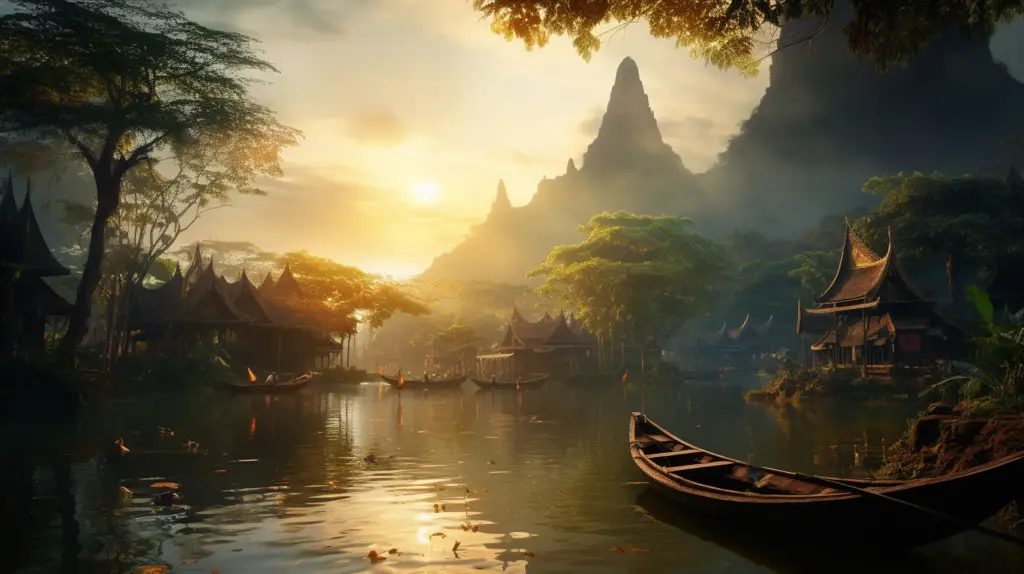
25 Interesting Facts About Saraburi
Saraburi, located in the Central Region of Thailand, is a gem often overshadowed by its more famous counterparts like Bangkok or Chiang Mai. Yet, this province, with its lush landscapes, rich history, and diverse cultural heritage, holds its own unique set of charms. Whether you’re an avid traveler looking for your next destination or simply curious about the hidden treasures of Thailand, Saraburi promises a plethora of surprises. Let’s dive into 25 fascinating facts about this enchanting province.
- Historical Significance: Saraburi dates back to the Ayutthaya period and has been historically significant for over 500 years.
- Limestone Quarries: The province is famous for its limestone quarries, which not only give the landscape a unique texture but also contribute to the local economy.
- Sunflower Fields: During November to January, vast sunflower fields in Saraburi bloom, turning the region into a golden-yellow paradise.
- Wat Phra Phutthabat: This temple, known for the Buddha’s footprint, is one of the most revered religious sites in Thailand.
- Diverse Ethnicity: Saraburi is home to various ethnic groups, including Thai, Lao, and Khmer communities.
- Mon Lhong 2000: The province boasts one of Thailand’s largest rose gardens, named Mon Lhong 2000.
- Pasak Cholasit Dam: This is one of the biggest dams in Central Thailand, offering picturesque views.
- Lopburi Influence: Historically, Saraburi was governed under the jurisdiction of its neighboring province, Lopburi.
- Thai Dairy Industry: A significant portion of Thailand’s dairy products is produced in Saraburi, especially milk.
- Muak Lek Waterfall: This scenic waterfall is a popular spot for both locals and tourists alike.
READ MORE: Thailand Travel Guide: 5 things to do in Samut Songkhram Province - Rare Flora: The Phu Khae Botanical Garden houses more than 2,000 plant species.
- Military Significance: The Royal Thai Army’s Cavalry Center is located in Saraburi.
- Buddhist Traditions: Every year, a large number of monks gather in Saraburi for Tak Bat Dok Mai, a flower offering ceremony.
- Bird Watching: The province is a haven for bird enthusiasts, with many unique species found in its forests.
- Limestone Caves: Saraburi boasts numerous limestone caves, some of which house ancient Buddha images.
- Tao Suranari Monument: A monument in honor of the Lady Heroine of Nakhon Ratchasima, an influential figure in Thai history.
- Local Delicacies: The province is known for its special dish, Moo Saraburi, a delicious pork preparation.
- Tham Krabok Monastery: This monastery doubles as a drug rehabilitation center, using unique methods and herbal medicine.
- Economic Hub: Saraburi is a significant economic zone with industries ranging from cement production to agro-industries.
- Ancient Temples: Beyond Wat Phra Phutthabat, there are dozens of ancient temples scattered throughout the province.
READ MORE: Thailand Travel Guide: 5 things to do in Samut Sakhon - Natural Parks: Saraburi is home to several natural parks, providing pristine habitats for diverse wildlife.
- Craft Villages: Some villages in Saraburi specialize in traditional Thai crafts, particularly pottery.
- Rock Climbing: The limestone cliffs offer rock climbing opportunities for adventure seekers.
- Mineral Springs: The region has numerous mineral springs, known for their therapeutic properties.
- Cultural Festivals: Saraburi hosts an array of cultural festivals, showcasing its rich traditions, from music and dance to local customs.
Saraburi, with its vast landscapes and enriched history, offers a unique blend of natural beauty and cultural immersion. A visit to this province promises an unforgettable journey into the heart of Thailand’s heritage. Whether you’re seeking spiritual solace, natural wonders, or historical insights, Saraburi has it all.
10 Amazing Facts About Saraburi’s History You Need to Know
Nestled in the Central Region of Thailand lies Saraburi, a province whose beauty is matched only by the depth and intrigue of its history. While many travelers are drawn to Thailand’s renowned beach destinations and bustling cityscapes, Saraburi offers a different kind of allure — one rooted in ancient tales, enduring traditions, and historical landmarks. If you’re keen to venture beyond the tourist trail and delve into the rich tapestry of Thailand’s past, here are 10 incredible facts about Saraburi’s history that you simply can’t miss.
- Ancient Beginnings: Saraburi’s history dates back to the Dvaravati period, with archeological findings suggesting that it was once home to prosperous communities as early as the 1st century.
- Influence of the Ayutthaya Kingdom: During the Ayutthaya period (1350-1767), Saraburi was an important strategic outpost, playing a crucial role in the defense and expansion of the kingdom.
- The Buddha’s Footprint: Wat Phra Phutthabat, one of the province’s most revered temples, is believed to house the footprint of Buddha. Discovered in the 17th century, this relic has turned Saraburi into a significant pilgrimage site for Buddhists.
- Lopburi’s Shadow: Historically, Saraburi was governed as part of its neighboring province, Lopburi. It was only during the Rattanakosin era that Saraburi became a distinct administrative entity.
- Khmer Influence: Throughout its history, Saraburi saw the rise and fall of many empires. The remnants of Khmer architecture and art can be found in the region, pointing to the influence of the ancient Khmer Empire.
READ MORE: Thailand Travel Guide: Day Trip to Buffalo Village in Suphanburi - The Burmese Incursions: During the multiple Burmese-Siamese wars, Saraburi was a strategic battleground. The province bore witness to numerous skirmishes and battles between the two mighty Southeast Asian forces.
- Railway Significance: With the construction of the Northeastern Railway Line during the early 20th century, Saraburi grew in prominence. This railway connection played an essential role in its economic and infrastructural development.
- Cultural Melting Pot: Due to its location and historical influences, Saraburi became a melting pot of cultures. From Thai and Lao to Khmer and Mon, various communities have left an indelible mark on its history and traditions.
- Royal Patronage: The province has received significant attention and patronage from the Thai Royal Family over the years, leading to the establishment of various royal projects and initiatives in the region.
- World War II: During the Second World War, Saraburi hosted Allied troops, playing a key role in regional defense strategies against the Axis powers.
Diving into Saraburi’s past is like opening a book filled with tales of valor, spirituality, and cultural confluence. This province, with its storied history, offers a vivid snapshot of Thailand’s ever-evolving narrative. So, the next time you set foot in this land, remember: every stone, temple, and river here echoes tales from a bygone era, waiting to be heard and cherished.
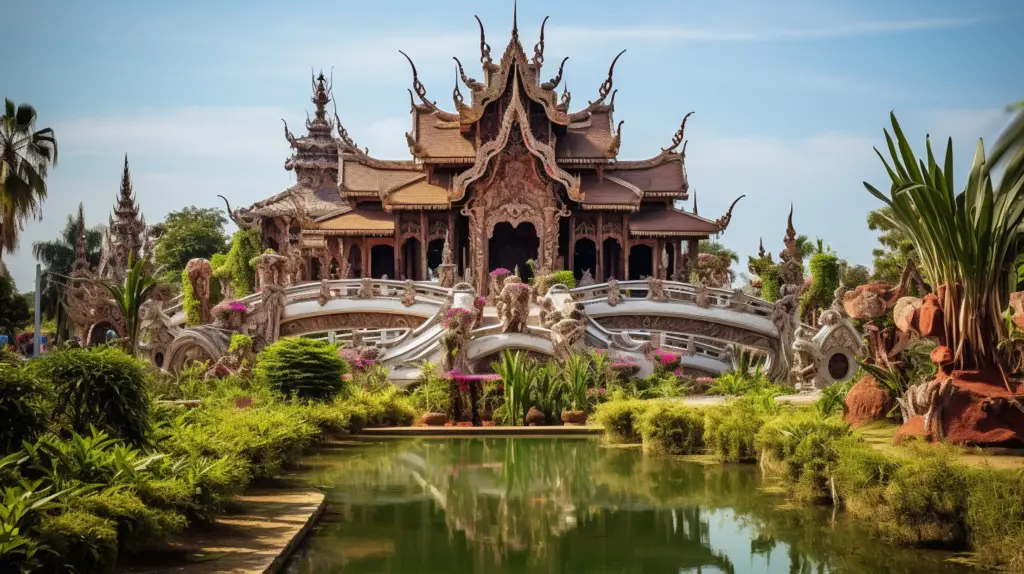
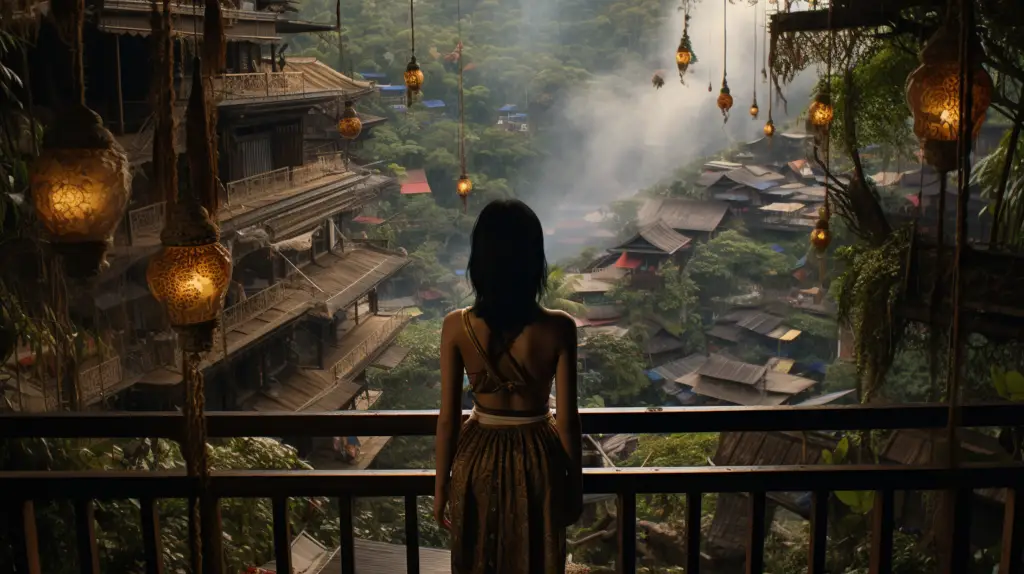
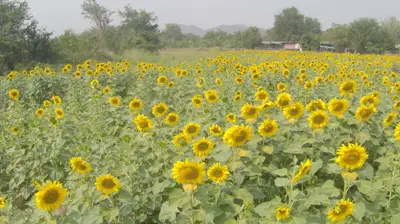
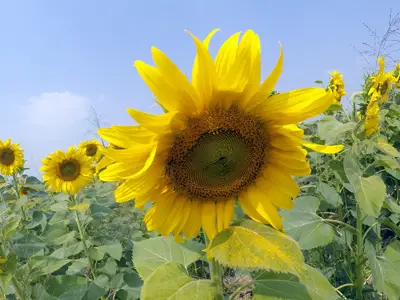
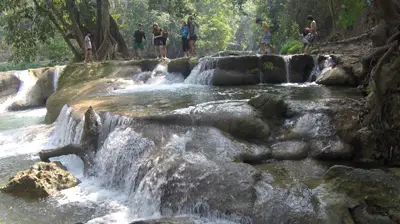
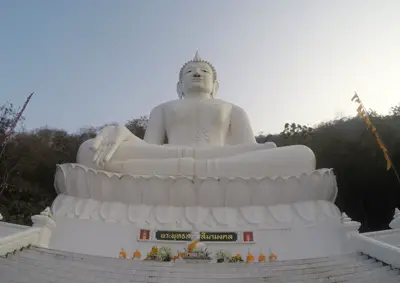
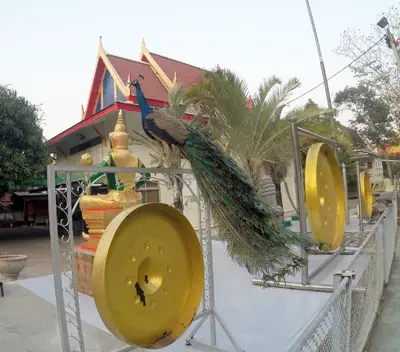
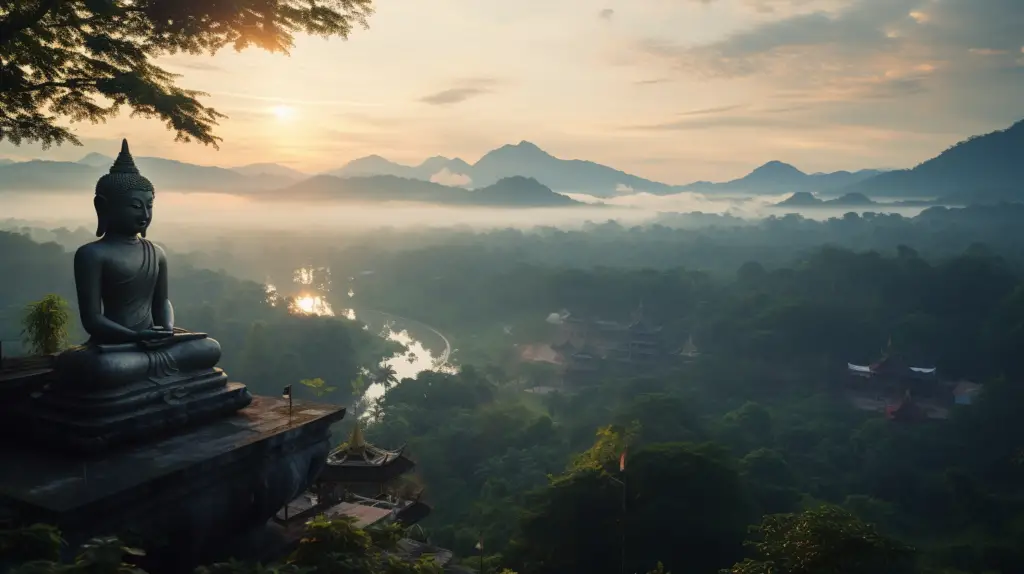


Hi I would like to check if the distance from the flower field and White Buddha at Wat Theppitak Punaram in Pak Chong is how far away? Thank you!